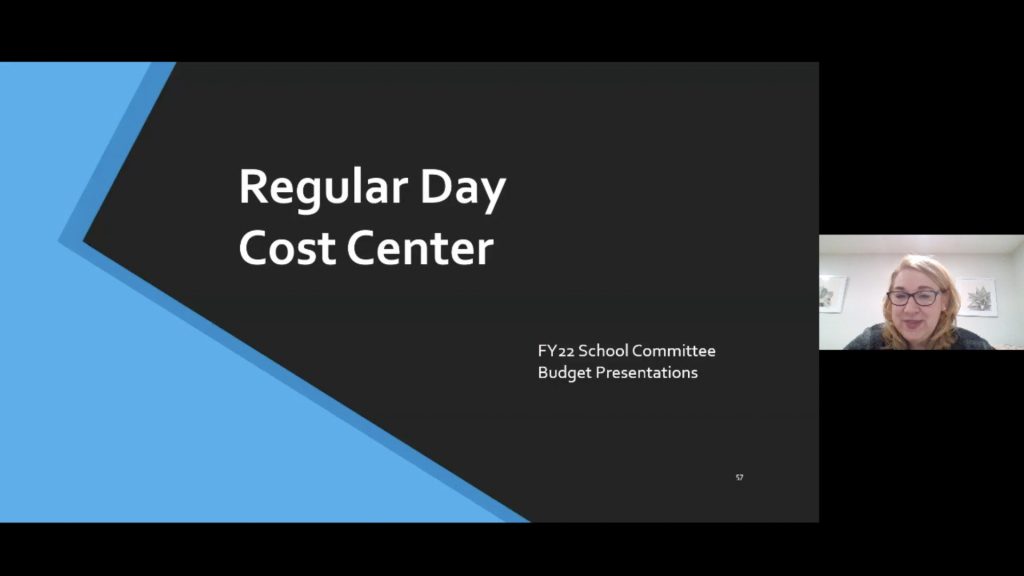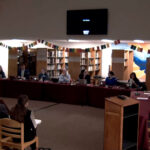Reading, MA — “We all need to pause and take a breath before it’s too late.” Superintendent of Schools John Doherty stated as he began the January 14 School Committee meeting. Doherty issued a statement in reaction to events occurring nationally and locally that seem to be extending a partisan divide in the community. “Divisive and harassing behaviors are not acceptable in our schools.” He continued. Doherty praised the role of continuing efforts with students in the areas of equity and social justice while emphasizing the district’s collaboration with the police department.

“I support the work our principals and teachers are doing inequity and social justice, AND I support our police in their work in our community.” Doherty declared. He also apologized for not properly vetting a video sent to parents as a tool to help them in having difficult conversations with their children. “We are committed to working with all students,” Doherty concluded.
[Read Superintendent Doherty’s entire statement here.]
The School Committee then focused on the two largest cost centers in the Fiscal Year 2022 budget, Regular Day and Special Education. Assistant Superintendent for Teaching and Learning, Christine Kelley, presented the proposed $28,512,943 regular day budget, representing 57.4% of the total school department budget. This cost center, which has a proposed increase of 3.3% over FY2021, pays salaries for teachers, specialists, paraeducators, and building administration. It also includes building budgets and curriculum expenses.

Kelley explained that the budget includes a continuation of implementing the new social studies curriculum and changes in the math curriculum in sixth-grade and one elementary grade. Until a new curriculum is chosen, Kelley is unable to say if beginning the change from Kindergarten up or from grade five down would be more advantageous.
Kelley also shared that several online curriculum tools, which have previously been paid for by grants, will be included in the budget. “These tools are engaging and robust,” Kelley commented, and she anticipates their use even after the district resumes in-person learning.
The proposed budget reduced the number of elementary teachers by one due to a student population bubble but includes an increase of a .3 Full-Time Equivalent (FTE) elementary specialist for music and art and a .3 FTE middle school physical education teacher.
Director of Student Services Dr. Jennifer Stys shared the proposed $16,329,409 budget for her cost center with the committee. This cost center represents 33% of the total budget and requests a 2% increase for FY2022. Among other items, it supports the 727 students in the district with some form of an individual education plan (IEP). The most considerable change in this budget is the addition of a new Literacy Coach position, which Stys referred to as “an investment . . . in our ability to support our students.” She emphasized her belief that the position would pay for itself as it will increase the district’s capability to keep additional students in the district, rather than using out-of-district placements. Funding for the position will be done through a “reallocation of accommodated costs.” School Committee member Thomas Wise praised the move sharing that he was “impressed that we can fit it in the budget and not have to make a special ask [of the Finance Committee.].” Committee member Shawn Brandt echoed Wise’s enthusiasm, “Any time we can keep a student in town, it is a big win for the student as well.”
The School Committee will hold a public hearing on the budget on January 21 and is scheduled to vote on a budget to be sent to the town manager on January 25.
During his update, Superintendent Doherty shared that he is pursuing the possibility of adding pool testing to the list of COVID mitigation tools that the district is using. In this plan, groups of ten to twenty-five students would be tested using a “non-invasive” swab, and the results would be pooled for efficiency. If the test returns negative, then no further action would be taken until the next test, usually a week later. If a positive result is returned, then those included in the test would be tested individually. Doherty emphasized that this is a mitigation factor and would help contain the virus’s spread, not help bring in-person learning back more quickly. The state would fund a six-week trial of the plan, after which the district could decide if it wishes to continue. Chief Financial Officer Gail Dowd suggested that after the initial period, it was possible that federal stimulus money could be used to fund the program through the remainder of the school year.
Doherty also shared challenges that have arisen due to continued discussions regarding the adoption of a full-hybrid model for the high school. These challenges include balancing classes to allow for the fewest satellite classrooms, scheduling of available rooms, teachers having to teach both in-person and live-stream at the same time for both weeks, space for directed study halls, the number of students switching from hybrid to remote and vise-versa, student attendance to in-person learning, and a reduction of the effectiveness of the remote learning program. He also shared that teachers and staff have a level of discomfort in returning fully with infection rates growing as they are currently. In response to this issue, he stated, “Our mitigation efforts, when followed, work.”
When asked how other districts have managed these issues when Reading cannot, Doherty cited the strength of Reading’s remote model, which includes significantly more live teaching than is occurring in many other districts. He shared that many districts that are engaging in the full-hybrid model at the high school level have primarily asynchronous learning during their remote weeks, while Reading’s remote model is primarily synchronous. “I feel like we are getting beat up for having more live teaching.” Doherty proclaimed.
Doherty did share that the next steps in the process would be to continue working with teachers and staff to solve the issues. The plan is also to determine the feasibility of developing an alpha-split hybrid model at the high school level. Doherty would not commit to a timeline for results on these issues.
The School Committee adjourned at 10:15 pm.

